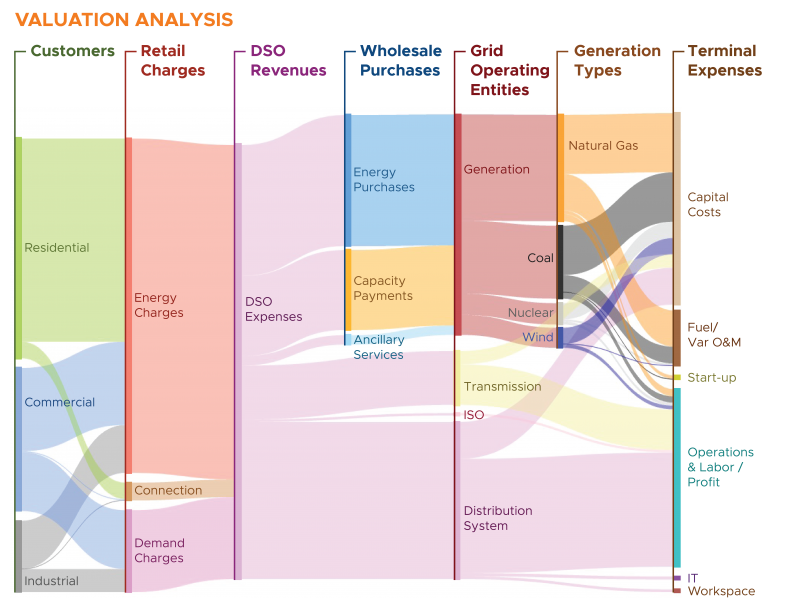Valuation Analysis
TSP’s valuation methodology integrates valuation into the core of transactive energy research studies. Valuation includes identifying value exchanges among all the relevant actors within a system, determining the relevant metrics and the data required to calculate them, and modeling value exchanges within the system operations via the Unified Modeling Language.
This valuation methodology, as a core part of the analysis and design of transactive systems, allows for granular, line-item economic analysis of the actors within a study. Granularity improves the applicability of transactive energy research studies to stakeholders. It also allows for impacts such as equity to be evaluated, as the economic analysis results can be viewed from the perspectives of relevant stakeholders individually, rather than by the net economic impact of the entire system.
Example of Cash Flow through the Electric Grid Ecosystem:
